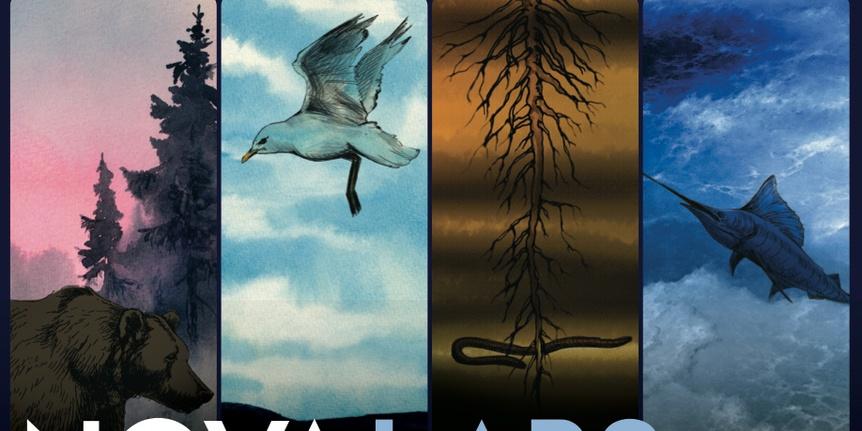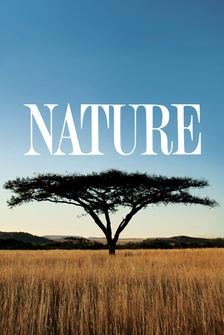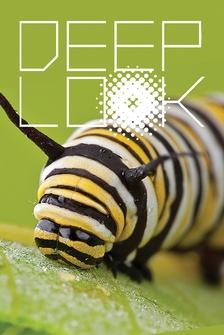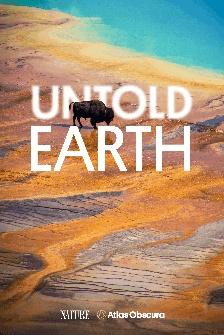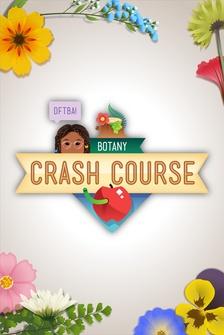(wind whistling) - [Joyce] Water is sacred.
We harvest water that comes because that is the gift for us.
(thunder crashing) - Water is our life.
What happens if we ran out of water?
What do we do?
(pensive music) (tractor humming) I grew up with my grandfather and some of my elders.
How I learned field work is looking at different ways that people do their traditional farms.
That's what I try to duplicate.
- The summer season is our big season when we're growing, and so we focus on planting.
We have to plant with the rains.
The traditional farming, what the O'odham used to do is not really disturb the vegetation but plant where the waterways are.
This is a brush dam.
We did this to help slow down the water and build up the soil again because as the waters come rushing in, it's been eroding the area, and it's making the wash wider.
And so here what we did is take the natural material from the dead trees and put 'em down into the ground, and then the branches, we just laid 'em all the way across.
And it's like at a angle, like a U-shape.
(pensive music) (rain pattering) - When it rains, it collects all the leaves, little branches, rabbit droppings, and that's what washes in to build that soil up.
- The O'odham word for the natural fertilizer is called wakola.
You can harvest that and use it in your plants or in your garden.
(pensive music continues) - This is one of the basins that we have here.
It collects the surrounding water coming from the traditional farm.
The contour that we have that wraps around these bushes and the mesquite tree also collects the water, and it allows the water to sit and absorb to help recharge the aquifers.
When this area fills up, it flows to this outflow, and it will slowly go into the basin that's inside there, and it will flow over into this other basin that we have right here.
And it will go into the wash down the ways, helping to provide water for the plants that we have beyond the farm.
(gentle upbeat guitar music) - So here we have our rock basin.
Its purpose is to slow down the water for a gentle flow into the fields.
The water is coming from field one and then flows into field two.
Once the water rises into the basin, it flows over the hump, and the rocks are positioned up and down so that the water is flowing slowly and steady to prevent erosion from happening and helps the water flow out gently.
(gentle upbeat guitar music continues) - So we have here this runoff irrigation system, or dry farming.
The ancient people took advantage of this slope by putting piles of rocks that eventually become like little check dams.
As the rain is running down the slope, it basically slows down the flow of the water, therefore retaining humidity minutes, and that's enough to grow more crops.
(rocks clattering) So you can tell that it's a little bit overgrown.
There's other plants that are taking advantage of the moisture.
You can see that this terrace is a little higher than than the terrace down below.
And then that terrace back there is a little higher than this one.
So that is the essence of this runoff passive water irrigation system of cultivation of agaves.
(stick tapping) Make sure that the roots are nice and well covered, and they don't have any air underneath.
So this way, we have then this little rock debris, kind of like small gravel-type rock will provide shelter and mulch for this agave.
And there you have it.
So now all we need to do... That's all the human work we need to do here.
The rain, when it comes, will do the rest of it, and then that agave will be set for another five, six years.
(gentle music) (gentle music continues) - Here in the Tucson area, I've been inspired by Clifford Pablo and with the traditional O'odham runoff farming practices.
And that's really what we are doing with this street-side and in-street water harvesting.
It's another form of O'odham runoff farming, but instead of pulling the water from a ephemeral arroyo, or desert waterway, we're doing it from the paved-street arroyo.
Our goal is to infiltrate more water than all these plantings will use.
We size these basins so that they're large enough to capture enough water to meet all the water needs of these plantings with a surplus amount of water that can infiltrate the aquifer and also reduce flooding.
This one will easily harvest probably over 10,000 gallons of water a year.
In our built environment, we have that concrete curb between street and the dirt area where you can plant.
And so I see that as like the Berlin Wall separating the water flow from the flood plain.
And so we're trying to reunite that.
So we drill a hole or cut the curb of that wall so the the water flowing down the street can reunite with the floodplain.
It's just like when we line our rivers with concrete or whatnot, we are denying the water to be able to go out onto the floodplain and reduce flooding and infiltrate the aquifer still more.
(dog barking) So by capturing runoff from the road adjoining this street-side basin, we're able to increase the available rainfall by three to 10 times.
And we have calculated that the average neighborhood street in Tucson drains over a million gallons of rainfall per mile per year.
And that's more than enough rain to sustain over 400 native food-bearing shade trees per mile, or one tree every 25 feet on both sides of the street.
So that's basically what we've been doing.
These water-harvesting strategies, these work everywhere.
What are the traditional practices of your area or similar climates elsewhere in the world?
Because everywhere there is a dry season, you will find there is a cultural lineage and history of water harvesting.
(thunder rumbling) - The farther we look into the past, the better off we can be in the future.
I have always had a respect for people who have had traditional knowledge and continue to practice it.
- Nobody ever does traditional farming.
They need more.
That's why I was trying to bring it back.
- My grandma and my grandpa, they farmed.
I never knew them, but I feel like that kind of, it's giving me that chance to know them in gardening because, you know, it kind of got lost with them.
- It's who our people were back then, and it makes me who I am today, and...
I'm gonna get emotional.
(laughs) It just heals a certain part of me that I needed healing.
It's very precious, that beauty that you have with the land and with the language, and most of all with your people, (speaks in foreign language) our way of life.
It's who we are.
(gentle music) (wind blowing)


